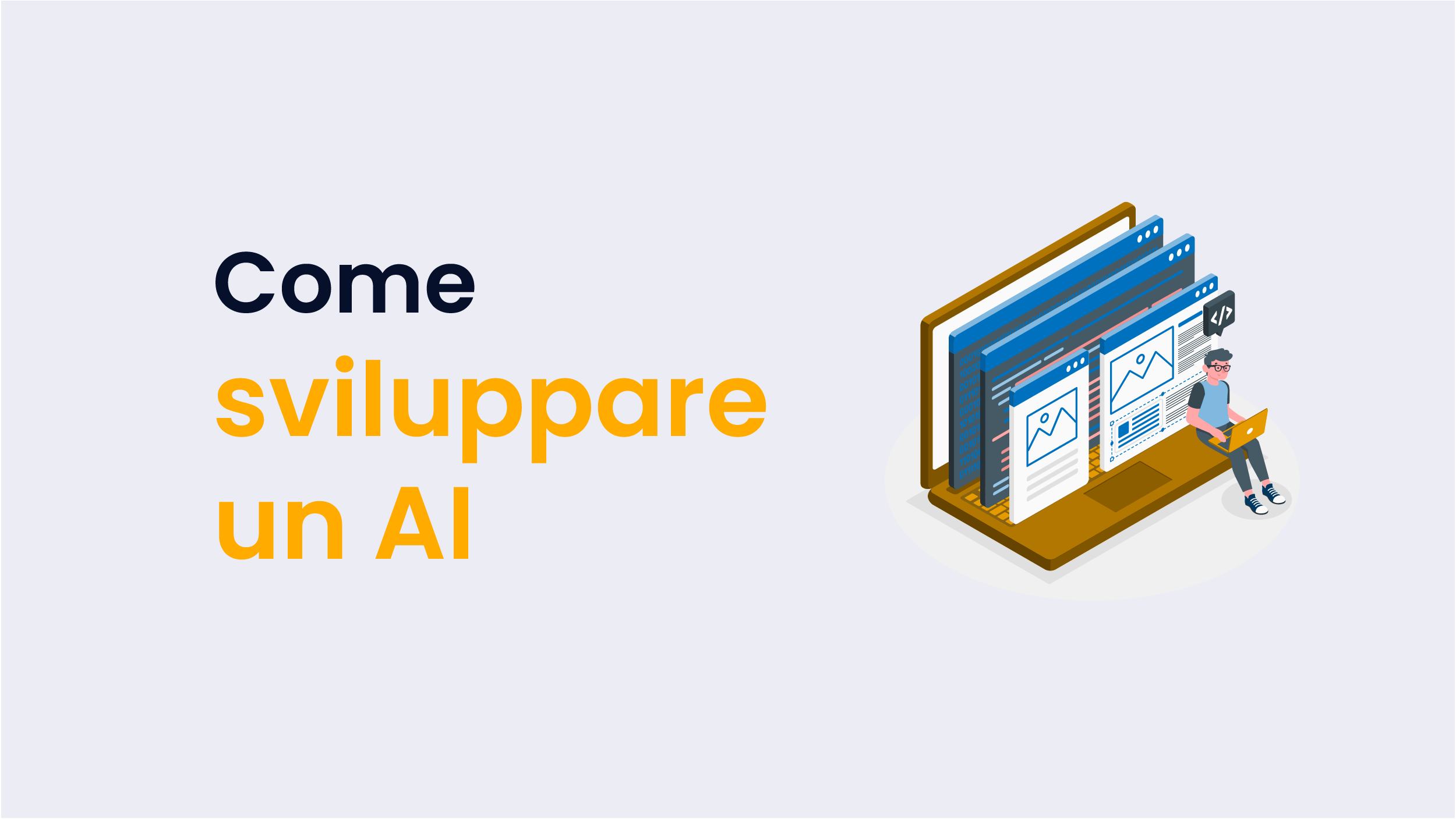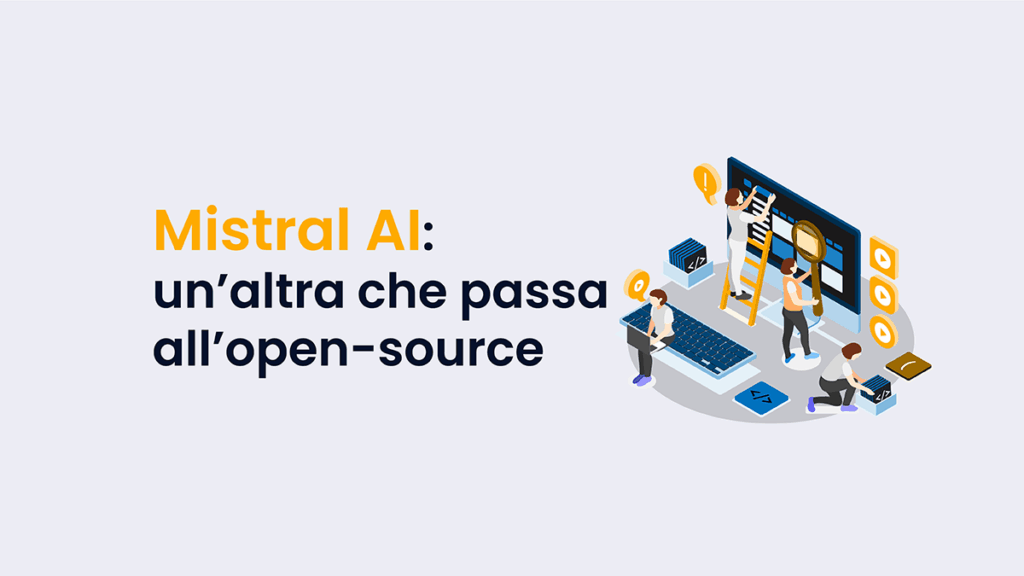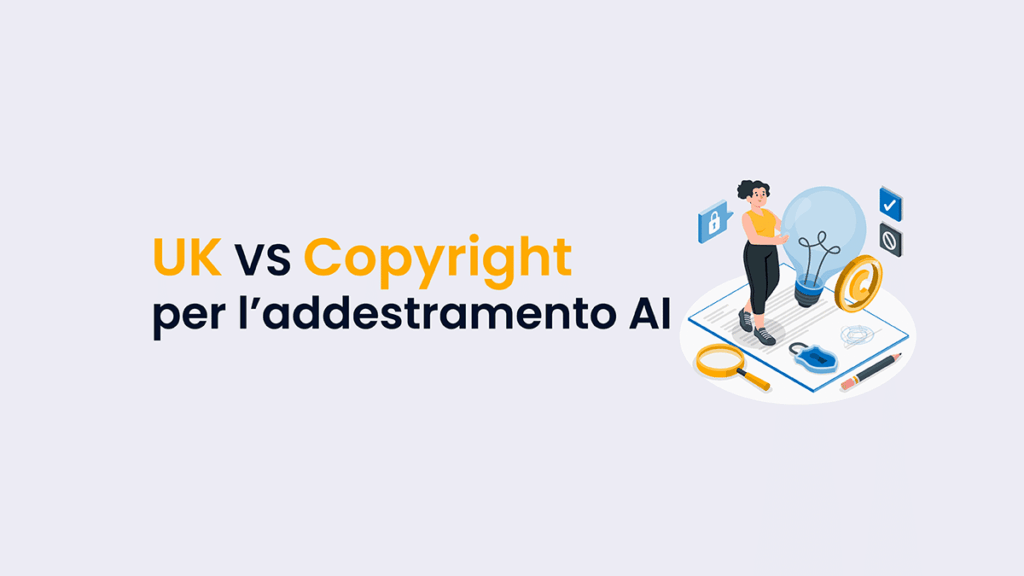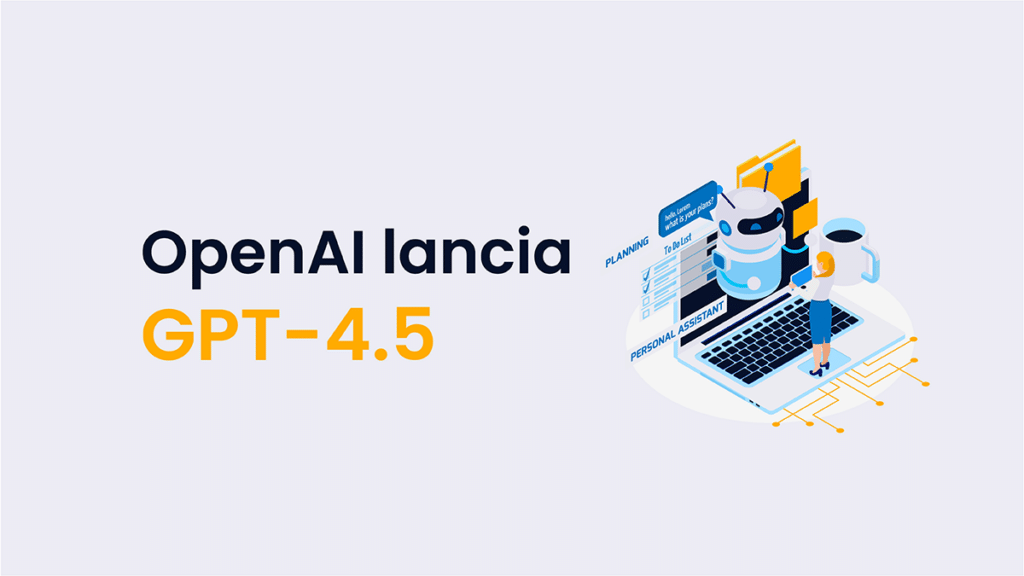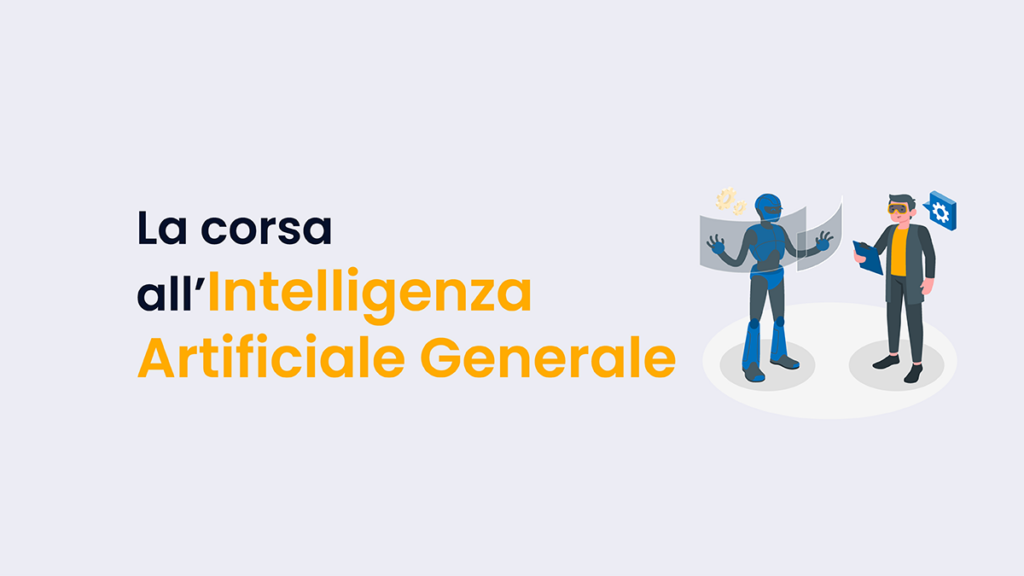In molti utilizzano un modello AI da clienti o consumatori, quindi per ottenere servizi impacchettati o per intrattenimento. Altri lo utilizzano come uno strumento, magari per lavorare. Poi c’è chi ha un progetto. C’è chi ha un sogno, una visione, l’intuizione di un business.
Se questa persona sei tu e stai leggendo queste parole, significa che hai l’iniziativa di sviluppare un modello AI adatto al tuo progetto. Una soluzione diretta alle tue necessità, una risorsa interna diversa da tutte le altre: unica, perché costruita su misura delle tue esigenze.
Qui vedrai tutti i passi necessari che devi fare per sviluppare un modello di AI adatto al tuo progetto, qualsiasi esso sia. Saprai da dove iniziare e avrai idea di come procedere, di cosa andare a cercare e di cosa ti serve.
Indice dei contenuti
Datti obiettivi chiari e misurabili
Uno strumento funziona, si desidera e si acquista se è la soluzione efficace, efficiente, rapida e semplice di un problema. Un problema che tu imprenditore vuoi risolvere con un apposito modello AI. A questa soluzione ci arrivi dandoti obiettivi chiari e misurabili. Ciò ti permette di mantenere da subito il controllo sul processo e lo rende meno complesso, prima concettualmente poi nel pratico. L’obiettivo per essere chiaro deve essere specifico e affinché sia precisamente misurabile, vanno stabiliti KPI: indicatori chiave che usi come riferimento.
Se per esempio vuoi velocizzare un servizio clienti digitale, datti come obiettivo ridurre una certa percentuale di attesa in un dato tempo. Così potrai misurare man mano i progressi e non perdere mai l’orientamento.
Creati un dataset pulito per avere controllo sullo sviluppo del modello AI
Quello che farà il modello e come lo farà dipenderà moltissimo dai dati che gli dai. Quindi identifica il tipo di dati necessari in base agli obiettivi: possono essere dati strutturati o non strutturati, come transazioni o immagini e testi. Le fonti da cui prendi questi dati includono e variano tra database interni, dati acquistati o informazioni raccolte tramite web scraping o API.
Alla fine della raccolta hai un dataset, che adesso devi pulire e preparare per l’algoritmo e il suo addestramento. In questa fase puoi impostare variabili che ti permettono di organizzare i dati secondo parametri che stabilisci tu, rimuovere anomalie e irrilevanze.
Con dataset bello pulito eviti il più possibile errori alla base dell’addestramento.
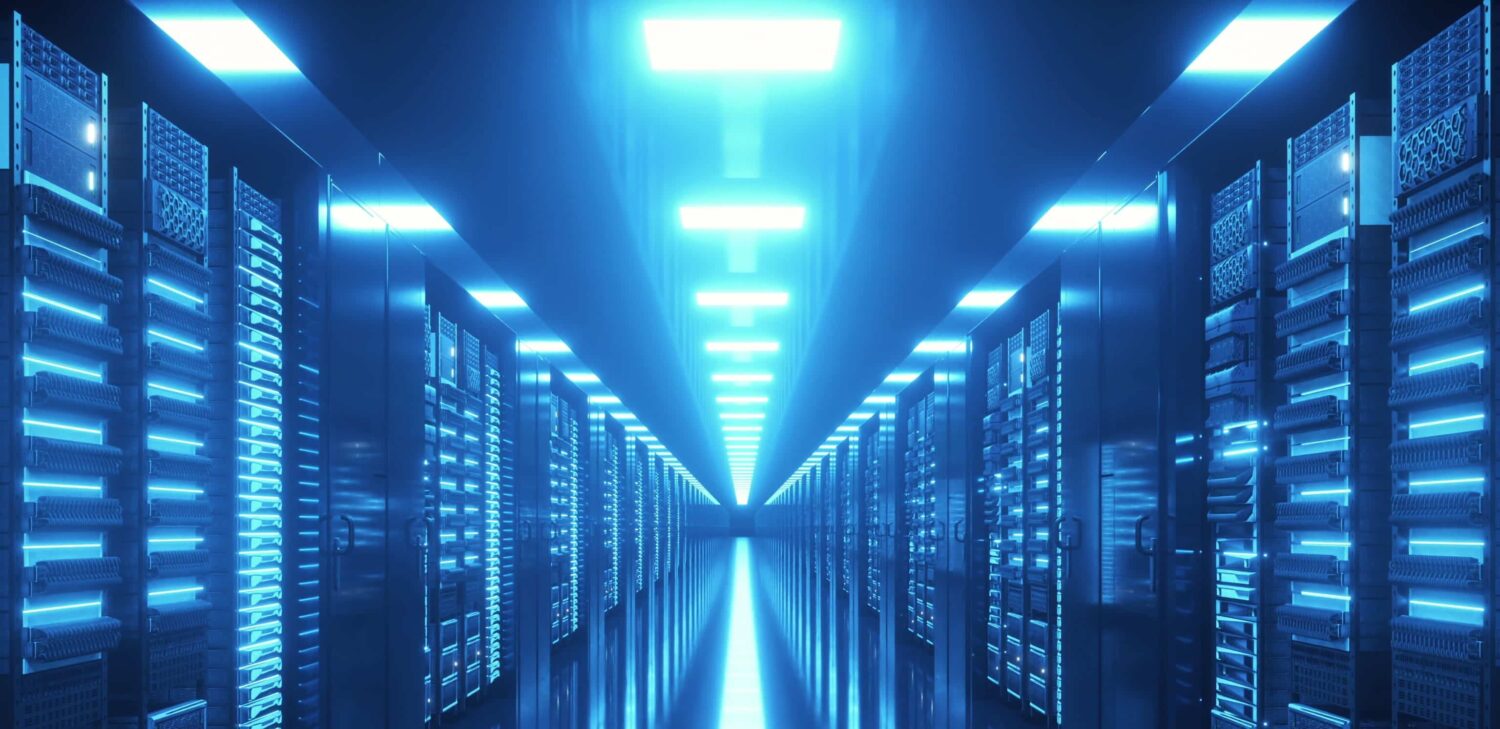
Scegli algoritmo e framework
Gli algoritmi sono le “ricette” che il modello AI utilizza per imparare dai dati. In questi dati quindi trova pattern, classifica informazioni o fa previsioni. Gli algoritmi sono specifici in base al problema che vuoi risolvere: se per esempio devi classificare i clienti in gruppi, userai un algoritmo di classificazione; se vuoi fare previsioni numeriche, opterai per un algoritmo di regressione; se i dati sono immagini, potrebbe essere meglio usare una rete neurale convoluzionale; se sono dati strutturati, un albero decisionale potrebbe essere la scelta migliore.
I framework invece sono software che ti aiutano a costruire, testare e ottimizzare il modello AI. In sostanza quindi testi gli algoritmi usando i framework. Ce ne sono alcuni come TensorFlow e PyTorch che offrono librerie predefinite per lavorare con diversi algoritmi. Offrono anche versioni già addestrate e pronte all’uso, così che tu possa sperimentare velocemente l’algoritmo. Prova più opzioni e confronta i risultati.
Così troverai algoritmo e framework giusti.
Addestramento del modello AI
Per iniziare ad addestrare il modello, devi dividere il dataset in tre parti:
- Training set per insegnare al modello.
- Validation set per monitorare le prestazioni durante l’addestramento.
- Test set per verificare i risultati finali.
Ora configura l’addestramento impostando il learning rate, ovvero la velocità con cui il modello apprende. Un learning rate troppo alto potrebbe portare a errori, mentre uno troppo basso rallenta il processo. Dovrai anche stabilire il numero di epoche, cioè quante volte il modello analizzerà l’intero training set.
Durante l’addestramento, strumenti come TensorBoard ti aiutano a visualizzare l’andamento e a correggere eventuali problemi in tempo reale.
Monitora i risultati e modifica i parametri se necessario. È importante seguire l’intero processo con attenzione, perché correggere subito ti garantisce controllo sull’addestramento del modello di AI. Mantieni la mano sul timone, conserva la rotta.

Valuta e ottimizza il modello AI
Dopo l’addestramento, valuta le prestazioni del modello per assicurarti che risponda agli obiettivi prefissati.
Per farlo usi il validation set così che monitori metriche specifiche: ad esempio precision e recall per classificazione, MAE o RMSE per regressione…
Se i risultati non sono all’altezza, modifica parametri chiave come il learning rate o la struttura del modello. Strumenti come Grid Search ti aiutano a testare diverse combinazioni di parametri per trovare la configurazione ottimale.
Una volta ottimizzato, verifica le prestazioni finali con il test set, che misura come il modello gestisce dati mai visti prima. Se i risultati sono ancora insoddisfacenti, torna ai dati o ai parametri, affinando il modello fino a raggiungere gli obiettivi desiderati.
Deployment del modello AI
Il deployment è il passo finale per rendere il modello funzionante. Qui si passa all’uso reale, elaborando dati live e fornendo risposte utili al tuo progetto. Per la distribuzione, puoi scegliere un’infrastruttura cloud come AWS o GCP, ideale per scalare facilmente e pagare solo le risorse utilizzate. In alternativa, per chi ha bisogno di maggior controllo, il deployment on-premise offre sicurezza ma richiede più gestione tecnica.
Strumenti come Docker “impacchettano” il modello AI assicurando che funzioni in modo identico su qualsiasi server. Kubernetes gestisce invece carichi di lavoro distribuiti, garantendo la stabilità anche quando il traffico aumenta. Fattore che ci ricorda l’importanza del monitoraggio. Anche qui, si possono rilevare eventuali cali e aggiornare il modello quando necessario, sfruttando nuovi dati o feedback raccolti dal sistema.
Questa fase di deployment, fatta bene assicura che il modello operi in modo affidabile e continui a generare valore per il progetto.
Alleggerisci, scala e ottimizza il modello
Dopo le fasi che hai visto, il tuo modello di AI è in produzione e il volume di dati cresce.
Ora monitorare il modello è più importante che mai per assicurarti che mantenga buone prestazioni senza costare troppo e sovraccaricarsi. Quindi, vuoi alleggerirlo in qualche modo. L’auto-scaling, per esempio, ti permette di aumentare automaticamente la capacità nei momenti di picco e di ridurla quando la domanda diminuisce. A mano a mano puoi pure ridurre la complessità del modello, con il pruning ad esempio, eliminando parametri superflui, mantenendo solo quelli essenziali. Oppure, tramite la quantizzazione, riduci la precisione numerica.
Per gestire carichi di lavoro importanti e complessi, valuta l’uso di hardware specializzati come GPU o TPU che velocizzano sia il training sia l’inferenza.

Questa manutenzione quindi è il coronamento costante di un lavoro di cui hai letto le principali fasi. Per arrivare a questo punto, ovvero avere un modello AI sviluppato, ci puoi mettere 3 mesi, 1 anno, 2 anni… questo dipende dal progetto specifico, dalle tue conoscenze, dai tuoi colleghi e dalle risorse che hai a disposizione.
